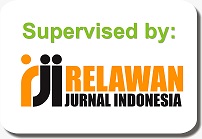Kontroversi Gaya Komunikasi Politik Presiden K.H. Abdurrahman Wahid
Abstract
K.H Abdurrahman Wahid is a religious and political figure in Indonesia. As a religious leader Gus Dur was known as the Chair of the PBNU and the great ulama of the descendants of the Banu Hashim. As a politician, Gus Dur is the fourth President of the Republic of Indonesia. Gus Dur's political communication as a religious figure and the President was known to be controversial. The controversial rhetoric of political communication turns out to have a hidden meaning that can be expressed through the study of discourse analysis using the method presented by Teun A. van Dijk. This study uses an interpretive approach with a critical paradigm. The 2001 Presidential Decree became the main focus of the author in expressing the meaning contained in the controversial phenomenon. The results showed that controversial political communication carried out by Gus Dur turned out to save the people from unconstitutional actions.
Key words: Political Communication, K.H Abdurrahman Wahid, Critical Discourse Study.
Full Text:
PDFReferences
Ahmad, M. (2010). Ijtihad Politik Gus Dur: Analisis Wacana Kritis. Yogyakarta: LKiS.
Aliansyah, M. A. (2014, Maret 8). Kisah Gus Dur pakai celana pendek Sisi Lain Istana. Retrieved from Merdeka.com: https://m.merdeka.com/peristiwa/kisah-gus-dur-pakai-celana-pendek-sisi- lain-istana.html
Bahram Kazemian, S. H. (2014). Critical Discourse Analysis of Barack Obama's 2012 Speeches: Views from systemic Functional Linguistics and Rhetoric. ProQuest, 1178-1187.
Barton, G. (2002). Biografi Gus Dur: The Authorized Biography of Abdurrahman Wahid. Yogyakarta: LKis.
Bungin, B. (2014). Penelitian Kualitatif. Jakarta: Prenada Media Group.
Burke, J. P. (2016). Presidential Power: Theories and Dilemmas. Westview Press.
Creswell, J. W. (2015). Penelitian Kualitatif, Desain Riset: Memilih di antara Lima Pendekatan. Yogyakarta: Pustaka Pelajar.
Haramain, A. Malik. (2004). Gus Dur, Militer, Dan Politik. Yogyakarta: LKiS.
Hargrove, E. C. (2001). Presidential Power and Political Science. ProQuest, 245.
Haryatmoko. (2016). Critical Discourse Analysis: Landasan Teori, Metodologi dan Penerapan. Jakarta: PT RajaGrafindo Persada.
HFS. (2001, Mei 21). Sebuah Bumerang Bernama Dekrit. Retrieved from www.liputan6.com: https://m.liputan6.com/news/read/13322/sebuah-bumerang-bernama-dekrit
Jorgensen, M., & Philips, L. (2002). Discourse Analysis as Theory and Method. London: Sage Publications.
Kazemian, B., & Hashemi, S. (2014). Critical Discourse Analysis of Barack Obama's 2012 Speeches: Views from Systemic Functional Linguistics and Rhetoric. Theory and Practice in Language Studies, Vol. 4, No. 6, pp. 1178-1187, June 2014.
Madji, M. R. (2012). Jurus Dewa Mabuk Ala Gus Dur: Kumpulan Rekam Jejak KH. Abdurrahman Wahid di Media Massa .
Mujiburrahman. (1999). Islam and Politics in Indonesia: the political thought of Abdurrahman Wahid. Islam Christian Muslim Relations, 339.
Neustadt, R. E. (1960). Presidential Power and The Modern Presidents: The Politics of Leadership from Roosevelt to Reagan. New York: John Wiley & Sons.
Norris, P. (2004). Political Communications. Encyclopedia of the Social Sciences,
ORS. (2001, Juli 23). Dekrit DInilai Hanya Raungan Macan Ompong. Retrieved from Liputan6.com: https://www.liputan6.com/news/read/17004/dekrit- dinilai-hanya-raungan-macan-ompong
Paul A. Soukup, S. (2014). Political Communication. Communication Research Trends, 2-3.
Rafick, I. (2008). Catatan Hitam Lima Presiden. Jakarta: Ufuk Publishing House.
Renkema, J. (2009). Discourse, of Course. An Overview of Research in Discourse Studies. Amsterdam / Philadelphia: Benjamins Publishing.
Rurit, B. (2003, Desember 10). Dekrit Adalah Wewenang Subyektif Presiden. Retrieved from Tempo.co: https://nasional.tempo.co/read/34073/dekrit- adalah-wewenang-subyektif-presiden
Woods, N. (2006). Describing Dscourse. New York: Horder Education.
DOI: https://doi.org/10.32528/mdk.v2i2.1921
Copyright (c) 2019 MEDIAKOM








